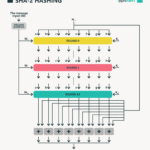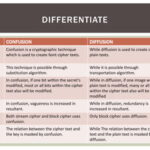In the world of cryptography, where secrets are zealously guarded and information is both currency and weaponry, the term “RSA 1024” emerges as a significant player. To unpack this concept, we must first explore the foundations of RSA itself, before delving into the specifics of the “1024” modifier, and uncovering the implications it carries in the realm of digital security.
The acronym “RSA” stands for Rivest-Shamir-Adleman, named after its inventors. This encryption algorithm is akin to a formidable fortress, designed to protect sensitive data from potential raiders. Just as a well-constructed fortress utilizes strong walls and complex entry points to safeguard its treasure, RSA utilizes mathematical principles to ensure that only designated parties can unlock the secrets it safeguards. At its core, RSA employs the principles of asymmetric encryption, a method that utilizes paired keys—a public key for encryption and a private key for decryption—creating a dual-layered security protocol.
To comprehend the “1024” in RSA 1024, one must appreciate its significance as a measurement of key length, which directly correlates to the algorithm’s strength. Imagine a key tailored to fit only a specific lock; a longer key has more teeth, leveraging greater complexity and ensuring a more arduous endeavor for any intruder attempting to breach the lock. In the context of RSA, the numeric designation of 1024 signifies that the key consists of 1024 bits.
In the grand tapestry of digital communication, key length is not merely a number; it is a crucial determinant of security efficacy. To illustrate, consider the concept of a numerical combination lock. The more digits in the combination, the more arduous it becomes for a person attempting to guess it. Similarly, the 1024-bit key enhances RSA’s security by exponentially increasing the number of possible combinations, thus shielding data from adversarial interference. One might even say that each additional bit doubles the potential configurations, adding layers to the complexity and robustness of the encryption.
However, RSA 1024 is not without its critics. As technology advances with alarming rapidity, computational power increases, reshaping the battleground of cryptography. While 1024 bits was once considered a bastion of security, modern computational capabilities have rendered it less formidable. In much the same way as a fortress may become vulnerable when outdated technology is employed by would-be invaders, so too has RSA 1024 come under scrutiny. Cryptanalysts—trained as digital detectives—have unearthed evidence suggesting that RSA 1024 could be susceptible to more aggressive forms of attack within a reasonable timeframe. This reality incites a continuous conversation regarding the length and robustness of cryptographic keys.
Concurrently, the evolution of quantum computing poses a looming threat over traditional encryption methods, with capabilities far exceeding conventional computational boundaries. In this landscape, the potential for quantum algorithms to breach RSA encryption poses a formidable concern, forcing the cryptographic community to adapt and innovate. With RSA 1024 on the front lines of this struggle, security experts advocate for longer keys—specifically 2048 bits or beyond, to preserve the sanctity of data within the evolving digital realm.
The metaphor of a digital key exemplifies the importance of evolving standards within cryptography. Just as a locksmith would iterate on a lock’s design to thwart thieves, cryptographers must continuously enhance their algorithms, aligning with the progression of computing capabilities. The debate surrounding RSA 1024 embodies this dynamic tension—between tradition and innovation, between established methodologies and the necessity for reformed standards.
Despite the emerging criticism, RSA 1024 is not wholly obsolete. Many legacy systems and applications still employ this encryption standard. It serves an essential role where immediate upgrades may not be feasible, and where moderate security suffices. In enterprise settings, fortified by additional layers of security protocols, RSA 1024 can function as a worthy protector of data that is not deemed highly sensitive. In this sense, it is akin to a trusty old wall that, although not impervious to modern artillery, still offers dependable shelter from more common threats.
Additionally, the implementation of RSA 1024 within widely-used protocols like SSL/TLS serves to confer credibility and a layer of security over digital communications. These protocols have fortified much of the internet’s infrastructure, allowing for secure transactions and communications across myriad platforms. While the industry pushes towards greater lengths, the normalization of 1024-bit keys has rendered them a common, albeit fading, choice in particular contexts.
In conclusion, RSA 1024 encapsulates a rich history and an evolving landscape within the realm of cryptography. Its function as an asymmetric encryption mechanism, paired with its designated key length, forms the backbone of secure communications in the digital age. While some may view it as a relic of a bygone era, others recognize its ongoing relevance, albeit with the understanding that future-proofing requires vigilance. Just as the tides of technology shift perpetually, so too must the standards that guard our collective digital treasury. RSA 1024 stands as a testament to both the legacy and ongoing evolution of cryptographic thought—a pivotal chapter in the ongoing narrative of our digital existence.









Leave a Comment